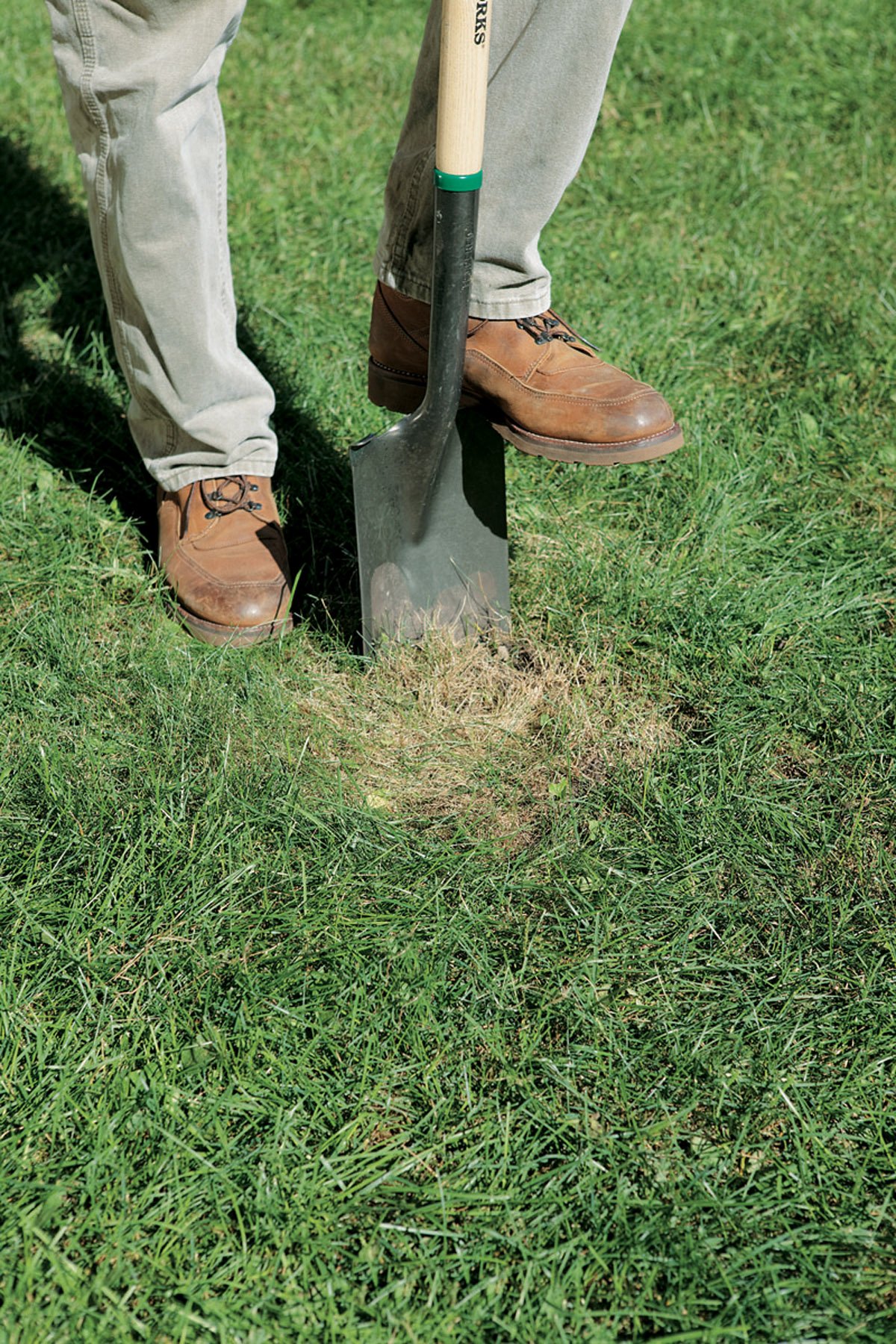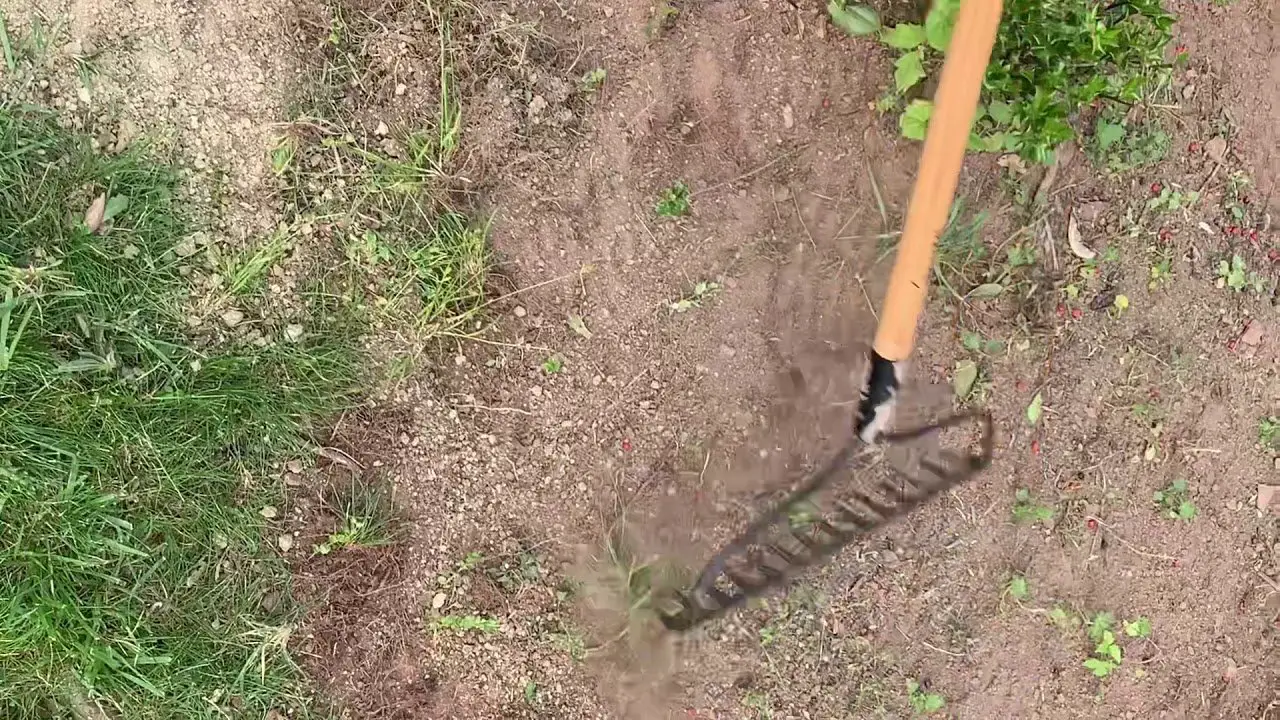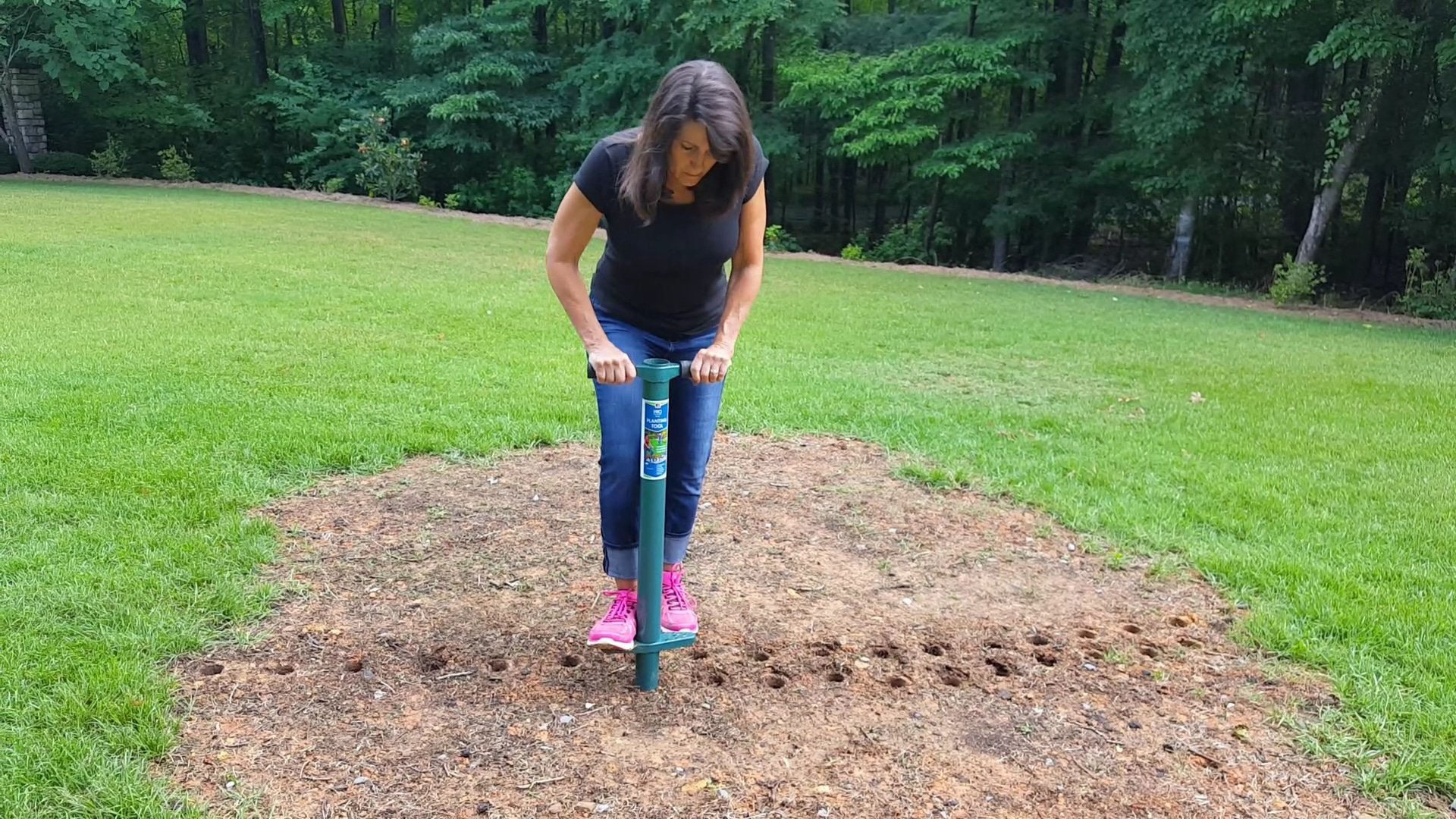Repairing Bare Patches In Lawn
As an Amazon affiliate, we may earn a small commision from qualifying purchases.
Repairing bare patches in lawn follow these tips to fix the unsightly brown, bare grass patches plaguing your yard.
Thicker, healthier, lusher, and most fabulous layer of grass on the block
If this is your goal, steps such as mulching your grass clippings, aerating your lawn , dethatching , mowing and watering your grass properly will take you closer to your dream grass.
But you wont achieve a beautiful lawn if you dont fix the brown or bare patches of grass on your backyard- in truth, whatever the culprit, nothing can be frustrating as seeing dead spots mess up all your year-round lawn care efforts.
Thankfully, all is not lost- the perfectly green turf you yearn for is within reach if you repair the dead spots.
Keeping that in mind, here is how to fix bare spots in lawn and get a pretty-looking lawn in no time..
A Lush Lawn Can Still Be Prone To Bare Spots We Take A Look At The Causes How To Repair Them And Cover The Bare Spots
You finally have your lawn just how you want it green and lush and thriving. Then, all of a sudden, a bare spot appears. What to do? To find out why bare spots occur, and how to fix them to return your lawn to its splendor, we checked in with Joe Churchill, senior turf specialist with Reinders, Inc. to share his insights and tips.
Fix Your Spotty Grass Now
Spotty grass can make your otherwise lush turf look neglected. Fortunately, there are plenty of ways to fix those balding patches of grass.
Whether you prefer the immediate gratification of laying sod in the bald spots, the cost savings of letting it fix itself, or something in between, the key is getting started now. The sooner you begin repairing those bald spots, the quicker your lawn will get back to its full, lush self.
Recommended Reading: Can You Hydroseed Over Existing Grass
What Causes Bare Spots In Lawns
Bare spots in lawn areas can be caused by a number of things, and knowing how to fix patchy grass starts with identifying your lawn issues. Take the time to investigate, and try to get to the bottom of your bare spot mystery before taking the steps necessary to correct the problem. Otherwise, you may continue to repair bare spots without addressing the actual cause.
Bare spots are often the result of:
- Excessive foot traffic
- Chinch bugs and other insects
- Fungal disease
Dont worry if you cant narrow down the exact cause of the bare spots right away. Just paying attention to the location and size before you begin to repair spots can make a huge difference. If the spot returns, then continue to investigate the cause.
Apply Your Grass Seed

Apply grass seed at the rate recommended on the grass seed bag label. Avoid applying too much seed as the seedlings can die out due to too much competition for water and nutrients. Use a high quality mixture of seed that is appropriate for the amount of sunlight in the area you are repairing. Look for improved varieties, or types of grass seed that is drought and/or disease resistant. For newer, full sun yards that were established from sod, use a pure Kentucky Bluegrass blend. For older sunny lawns, use a mixture of Kentucky Bluegrass and Perennial Ryegrass. For shady lawn, use a shade mixture.
Don’t Miss: Does Lowes Rent Riding Lawn Mowers
How To Fix Bare Spots In My Lawn
Once you have identified and resolved the cause of the Bare Spots, it’s time to repair the damage. Typically, you would only seed in the late Summer, during the months of August or September, as seeds germinate in the Fall so as to sprout in the Spring. In the case of Bare Patches however, we recommend that you seed the area right away, rather than leave it exposed. Read more about how to fix these areas, depending on their condition.
Approach : Tackle The Fertilizer Burn
In some cases, the ugly bare patches are a result of the grass suffering a fertilizer burn- these are the brown spots that crop up a few days after fertilizing a lawn.
To be clear, the trigger is the excess salt from the fertilizer building up and ultimately burning the grass.
Now, if this is what youre noticing, try this procedure:
Recommended Reading: Get Rid Of Geese Naturally
Plant At The Right Time Of Year
The goal is to get the roots established before environmental conditions become too harsh for the baby grass to survive. The best time to repair bare patches is when the grass is actively growing, says Waltz. That depends on where you live. Warm season grasses grow during the warm times of year, which is about May to mid-September. Cool season grasses grow during the cooler times of year until the soil freezes, which is roughly December to February. If youre not sure what you have, talk to your local university coop extension service. Both seed and sod are good options for patching.
How To Make Lawn Repairs
Once you address the cause of the bare spots in the lawn, its time to restore those spots so they match the rest of your lawn. In most cases, the best way to repair those bare spots is to replant them with grass.
Whether you use grass seed or sod, you must first dig up the soil to be planted. Loosen it with a shovel and add some good topsoil to give the new grass a good start. Level the area off to match the ground level of the surrounding lawn.
Lawn Repairs With Grass Seed
There is more than one way to make lawn repairs with grass seed. The simplest is to buy a bag of lawn patch with fertilizer and mulch pre-blended in. Cover the bare areas with grass seed and then be sure to keep it wet while the seed germinates, sprouts and gets established in your lawn.
How To Repair Bare Spots With Sod
Sod is sections of established grass. If you use it, be sure to keep it wet until you can install it. Cut pieces to fit the bare spots in your lawn, and lay them down. Make sure that the sod has good contact with the soil bed you prepared ahead of time. Water well!
Trying to improve an area of your lawn that grows in shade? Check out my grass-growing tips for shady areas.
You May Like: How To Kill Wild Violet Weeds In Lawn
How To Fix Bare Spot In Lawn Best Practices
To borrow a tired cliché, prevention is better than cure.
What Im saying is this: Rather than waiting too late when the problem is widespread and you have no option but repairing bare patches in lawn- you should observe the best lawn care practices.
Here is a checklist of must-dos and not-to-dos when it comes to lawn care if you want to maintain your grass in tiptop shape:
What If You Plan To Add A Lot Of Topsoil To Your Bare Patch
If youre adding a fair amount of topsoil, you will be better off seeding in the late Summer or early Fall. The reason for this is that topsoil carries a lot of weed seeds that will sprout prolifically in the Spring and Summer. Keep the area wet for 3-4 weeks to get the grass to sprout and water it a couple times per week until it is fully established.
You May Like: Peat Moss For Growing Grass
How To Repair Bare Spots In Lawns
Learning how to fix bare spots in lawn spaces is an essential part of lawn maintenance. The best method for grass spot repair is to overseed with new grass seed in the affected area. Overseeding, or planting new grass seed, allows for a healthy new start and can result in a virtually undetectable repair.
The best time to sow seeds for lawn patch repair depends on the type of grass you have. Youll want to match the type of grass seed to what is already growing. Cool season grasses do best when planted in late summer to early fall. Warm season grasses perform best when the seed is sown in spring or early summer.
If youre not sure what seed to use, give your local extension office a call. They can identify the perfect grass for your area and help figure out what types of grass will give you the quickest grass spot repair solution.
Rake Out Dead Grass With Leaf Rake

Use a plastic leaf rake and gently rake out any dead grass from the area you are repairing. This helps to expose more soil, which is needed for the grass seed to grow.
You do not want to rip out any of the existing, healthy grass, but should be able to get most of the dead grass raked out. Save the dead grass for later, as you will want to use some of it to cover your seed in a later step.
Recommended Reading: How Much Is Trugreen Lawn Service
Approach : Eradicate Grubs
If grubs have spent the summer munching on your turf grass roots, brown areas may soon emerge as grass decays.
The fix is to eradicate the grubs by spraying carbaryl over the lawn.
Introducing beneficial nematodes can be a good alternative to the aforementioned grub killer for lawns.
Quick Note: To check if you have a grub-infestation, just dig into any brown patch and try to look for the creatures . As a rule of thumb, finding 10 or more of the creatures per sq. foot of sod points to a grub infestation.
What Causes Bare Spots
Hard or compacted soil can make it difficult for grass seed to grow because the roots are unable to access the air and soil nutrients they need to grow. Shade from trees, buildings, and other objects can cause thin grass growth, straggly grass, and bare patches. There may be dead spots in the lawn because those areas are not getting enough sunlight. Fertilizers, herbicides, pesticides, and some insect repellants can cause brown spots if spilled. If not applied properly, these products could burn the grass. Lawn diseases and insects like soil surface-feeding chinch bugs and sub-soil feeding white grubs can cause thin, patchy grass. The family dog can also be a culprit for some of the brown spots that appear in our lawns.
Recommended Reading: How Much To Pay Teenager To Mow Lawn
Water Water Water Until Established
You will now want to keep the seed watered until it germinates. Then you will want to water it once or twice per week depending on how hot and dry it is. If you are doing the bare spot repairs in Spring, keep in mind, the new seedlings will not have deep enough roots to survive the coming Summer heat without frequent watering. The new grass may come up nicely and then wilt out during the Summer.
Now that you know how to repair a bare area in your lawn, be sure to let me know so I can avoid applying any treatments to the areas until the grass is fully established. Of course, if you have any questions at all, feel free to reach out to me.
Repairing A Lawn With Grass Seed
When all the above measures dont work, it could be time to reseed those bare spots .
Start by raking the ground then apply your grass seed as instructed in your grass seeds bag.
Quick Note: If you have St. Augustine grass, the best approach is sodding or plugging your bare spots rather than seeding them. You want to purchase adequate pieces of sod/enough plugs to cover the bare spots if youll take this route.
Recommended Reading: Can You Hydroseed Over An Existing Lawn
The Main Causes Of Bare Spots In Your Yard
Those patchy, bare spots in your lawn are often caused by fungi, pests, compacted soil, an excess of shade or even mowing and watering habits . While reseeding helps, its worth figuring out whats causing those patches in the first place.
So, got a turf that needs to be treated? If youve eliminated fungi, bugs, grubs, pests and other causes like thatch, you may just need some seeds.
What Causes Bare Spots In The Lawn
Bare spots in your lawn can have several causes. They are:
- High foot-traffic areas
- Disease or pests, such as grubs
- Chemical burns from too much fertilizer or weed killer
- Drought or watering issues
Before you repair bare spots in your lawn, you need to figure out whats causing them and address the source. Thats a big step towards controlling them. In high traffic areas, figure out how to redirect the traffic or diffuse it. Treat grubs or insect infestations, and find and solve issues with under-watering.
Recommended Reading: How Much Peat Moss For Lawn
Preparing Bare Spots For Repair
Mow damaged spots and surrounding areas at normal spring mowing levels, and then remove dead or damaged grass to expose clean soil. If leveling is needed, add or remove topsoil, rake spots briskly, and then smooth the surface. Loose, smooth soil invites new seedlings to take hold.
Delay adding pre-emergent herbicides or weed-and-feed products to repair areas. Unless applied at least five to six weeks before seeding, these products hamper seed germination and rooting.
How To Repair Bare Spots

The cause, of course, determines the cure.
If the bare spots are dog spots, Churchill suggests flushing the area with water to move excess salt through the soil. Afterward, prepare the soil for repair by scratching it up, even adding in some new soil to make the area level with the rest of the lawn.
If the cause of the bare spot is disease or other growth issues, Churchill says to scruff up the straw or dust from the dead area, add new soil and mix into the existing soil. Then overseed the area and water in as you would with new grass seed. If the area is bigger, you may want to consider sprigging or sodding to fill the bare spots. Generally, reseeding the spots will do.
Once you repaired the bare spots, Churchill says you shouldnt need to change maintenance practices, other than spot-irrigating the areas that were reseeded, sprigged or sodded.
Recommended Reading: Best Time To Aerate Lawn In Georgia
How To Patch Holes In Your Lawn
Heres how to fix those ugly bare patches in your yard.
No matter how much TLC you give your lawn, its inevitable that unsightly patches and holes will show up on your beautifully manicured yard. But you dont have to put up with those scraggly areas.
Heres how to say so long! to those holes in your lawn:
Grass Seed Germinates Readily In The Spring So This Is The Ideal Time To Fix Any Bare Patches That Have Appeared And Make Sure Your Lawn Is A Solid Block Of Perfect Green
New lawns can be started from seed in spring, and bare-patches over-sown with seed to help them fill out. Patches can be caused by a number of reasons. Dog urine can burn grass and cause it to die back. If you leave a thick layer of lawn clippings on the surface of the lawn they can smother the grass below and create a bare patch. Sometimes a hole is left behind after youve removed a particularly hefty weed. Moles can wreak havoc. Whatever the cause, bare patches of grass are easy to fix with some grass seed.
If youre filling in patches, be sure to choose lawn seed that will match your existing grass. For example, if your lawn is made of fine-bladed fescues, choose a fine or luxury lawn seed mix, but if its a hard-wearing lawn with thick-bladed ryegrass, a box of general purpose lawn seed will suffice.
In general, with lawn seed the adage that you get what you pay for holds true. Good quality lawn seed will have high germination rates and shouldnt contain rogue grass species, giving you a better lawn in the long run.
Fork over the soil at the base of the bare patch, and scatter additional top soil over it if necessary, to create a crumbly seed bed for the lawn seed. Scatter the seed over the patch at the rate given on the packet and rake it in to cover the seed and prevent birds eating it. Many brands grass seed comes with a coloured protective coating thats supposed to make the seeds less visible to hungry birds.
More tips on getting your lawn summer-ready here.
Read Also: Where To Buy Revive Lawn Treatment
Spring Lawn Care: Reseeding Tips To Fix Bare Spots Thin Grass Stands
Spring rain brings your lawn back to life. With cooler temperatures and plenty of moisture in the ground, the grass tends to grow faster, requiring frequent mowing.
However, spring lawn is not always perfect. Patches of bare spots and thin grass stands are common this year due to a lack of snow cover to provide insulation to surface roots. To repair the damaged areas, consider the following reseeding options and best management practices:
Break Up The Bare Spot And Reseed
Use a small gardening shovel or rake to break up the dry spot on your lawn. Remove any rocks, leaves or debris. Choose the appropriate grass seed for the spots shade density and cast the seeds over the turf. Spread about a half an inch of compost or topsoil on the strewn seeds.
Tip: To get good seed-to-soil contact, gently rake the seeds and soil into the grass.
You May Like: How To Kill Violets In Lawn
